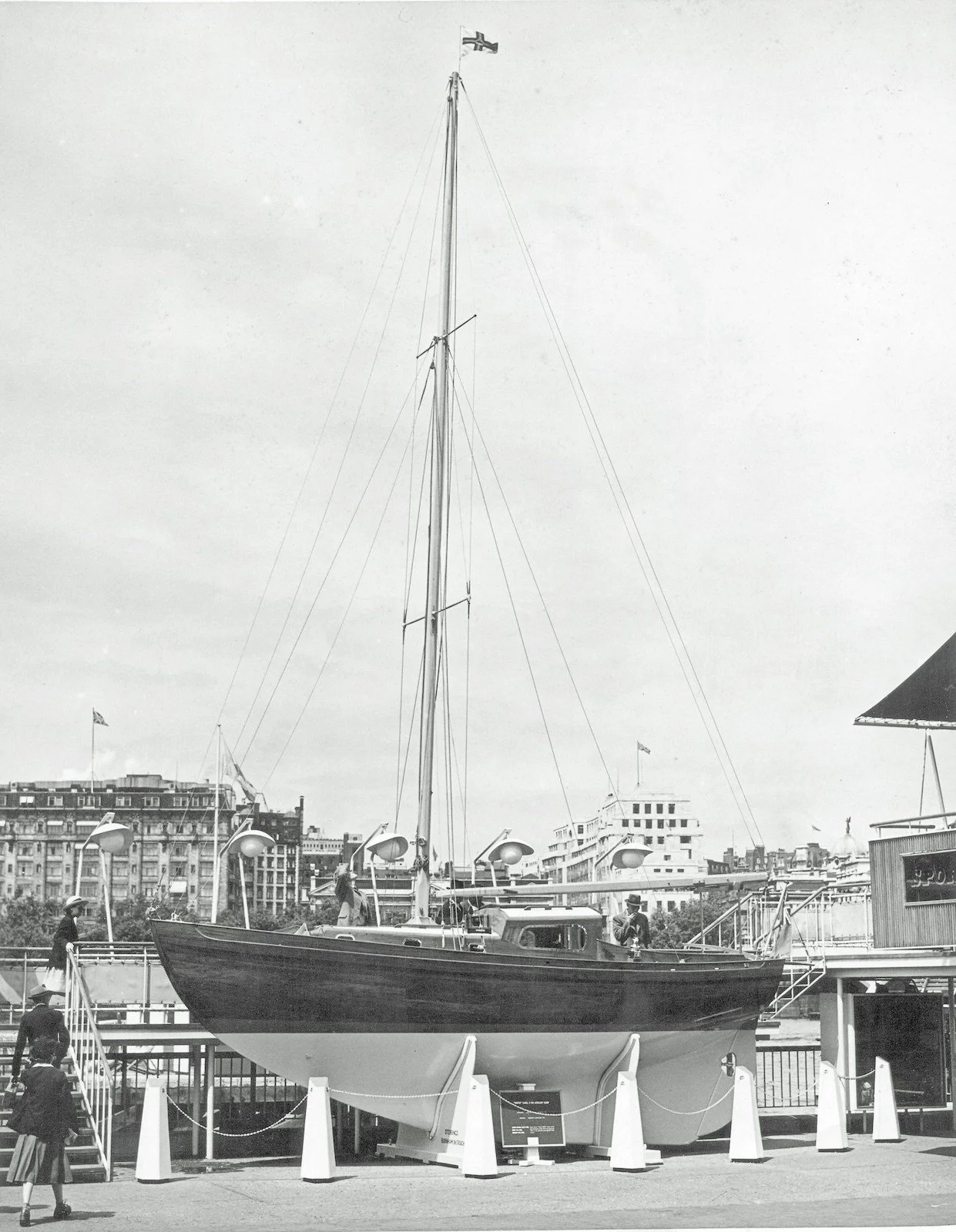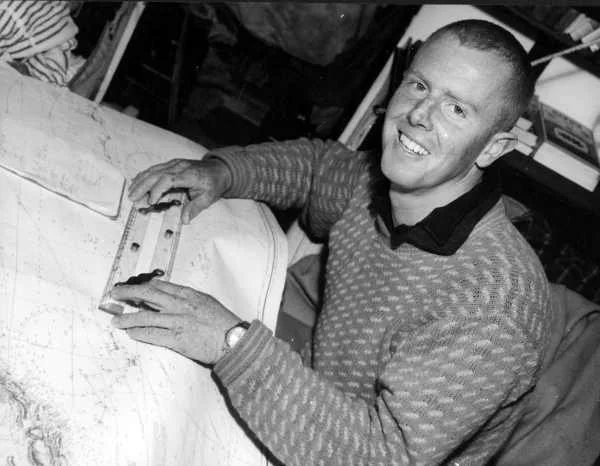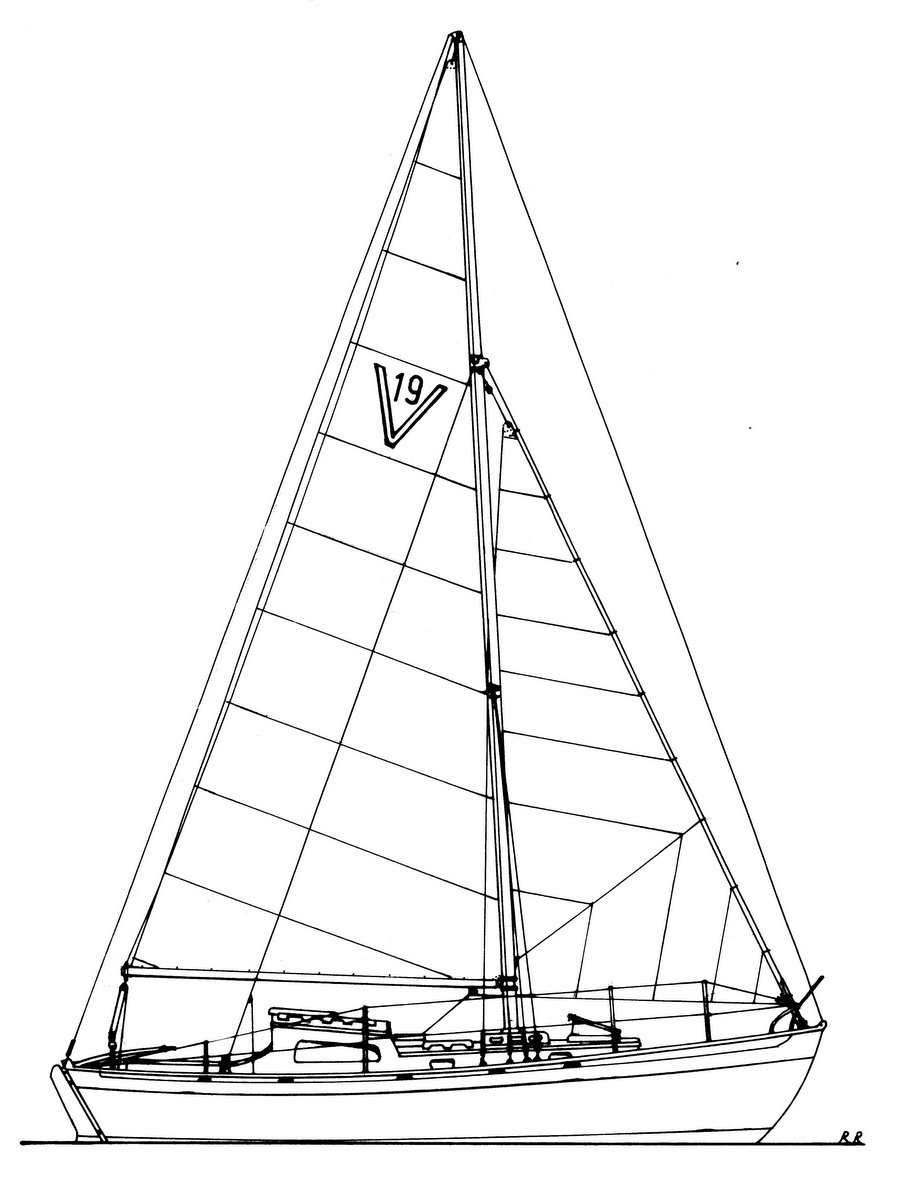Bill Nance Brilliance
CIRCUMNAVIGATOR
As generational memories fade, we should be reminded of sailors that have ventured outside the heads in small boats with simple equipment and achieved remarkable things. Sailing single-handed offshore requires quiet confidence, not always underpinned with experience, combined with pragmatic optimism to back yourself ….and just make things work. Following the recent Smeeton family story, SWS was prompted by Peter Ford (aka the Chef) to write about another intrepid sailor.
SWS met the Chef on Deal Island in Bass Strait in 2023. He was sailing his 28ft Laurent Giles Normandy IRENE single-handed from Geelong to Hobart for the Wooden Boat Festival. We sat at the hilltop desk with Joy Phillips, AWBF Board Chair and skipper of HOLGER DANSKE and Kaci Cronkhite, her crew from Port Townsend and longtime manager of their WBF. With all heads buried in iPhones and weather Apps, we were keen to get a forecast for Flinders Island to Banks Strait and the Tasmanian east coast.
All experts at the Weather Desk. Deal Island Bass Strait February 2023
Last month the Chef sent signals from Port Townsend, Washington State. Rather than buying a metal detector for transition to retirement, he joined the crew of a 70 footer in the 2023 Clipper race from Cape Town to Fremantle. Having his face smashed on a stanchion by a monster wave, he is well aware of what awaits southern ocean sailors. Chef later re-joined the race for the Pacific leg from Zhuhai via Qingdao to Seattle. After a short drive to Port Townsend, he was proudly standing with locals Kaci Cronkhite, custodian of the Danish Spidsgatter PAX and Bill Nance.
Peter Ford, Bill Nance & Kaci Cronkhite. Port Townsend April 2024
If you don’t know something of Bill Nance, you should. Between 1962 and 1965 aged 25, Bill Nance completed a southern circumnavigation via Cape Horn in his Laurent Giles CARDINAL VERTUE. He was the first Australian to complete this journey single-handed. In recognition, the Americans awarded him the Joshua Slocum medal, the International Award for Sailing Achievements. Australia hardly noticed, except for the die-hard yachting fraternity and the odd newspaper article. With the efforts of determined supporters, Bill was awarded the Order of Australia in 2019.
Miles Smeeton published ‘Because the Horn Was There’ in 1968. He wrote ‘this must be the greatest circumnavigation of all time because it was done without any financial backing or the spur of publicity and the distance and times were fantastic’. Don Holm in his book ‘The Circumnavigators’, described Nance as ‘one of the boldest and most competent but least known circumnavigators’.
The small Laurent Giles yachts have proven to be extremely capable offshore. The Vertue class is 25ft LOA with a 21ft waterline and a relatively powerful sail area of 395sq ft. These designs follow a long heritage of Scandanavian Spidsgatter like Cronkhite’s 45sq meter PAX and the English double-enders designed by Albert Strange.
The pictures below show just how small they are to be away in the southern ocean on your own. Vertue FESTIVAL (now FIDELIS) was exhibited on London’s Southbank as an example of the ‘best of British craftsmanship’ at the Festival of Britain during the summer of 1951.
Vertue FESTIVAL Southbank London 1951 (Long cockpit version)
Vertue RAUMATI under sail. Courtesy Beken of Cowes
Bill Nance grew up in Wallaby Creek, a manicured but remote Board of Works (MMBW) bush village near Kinglake. Weekly forestry workers would be housed in quarters and head home on the weekend. During the 1950’s only three families (Nance, Holding and Blair) were permanent residents. While this is part of Melbourne’s water catchment system its hardly sailing country being some 60Km by winding tracks and roads from Port Phillip Bay. The children were driven to school at Kinglake West in a Nursery works truck. With no local high school Bill finished his education by correspondence and took off overseas.
Perhaps growing up in a tiny isolated community was Bill’s making. It likely meant being self-reliant and learning to happily spend time on your own. Bill must also have worked out that one can connect to the wider world through books and letters.
After working for several years in South African and Rhodesian (Zimbabwe) diamond and copper mines to save some money, Bill got to London. He had been writing to D. H. (Nobby) Clarke in the UK who had experience with designing and selling cruising trimarans around the world. Clarke later wrote ‘An Evolution of Single-handers’ in 1976, describing his corresondence with Bill. The Clarke family also had a Thames barge. Nobby arranged for Bill to serve a short seagoing apprenticeship on another Thames barge CAMBRIA. This was one of the last engineless flat bottom transport ships working in the Thames estuary. A 90ft sailing barge, capable of loading 180 tons of cargo is hardly an introduction to offshore sailing in a small yacht.
In 1962 aged 23, Bill purchased CARDINAL VERTUE from Dr. David Lewis, a London physician from New Zealand who sailed her in the first Observer Single-handed Transatlantic Race. He later became well known as an adventurer. Pictures of DL on CV here
Bill’s plan was to sail from London with the prevailing winds and currents to his hometown of Melbourne. This was pretty much the same route as the First Fleet in 1778. In preparation he removed the motor to make space for a water tank. He had studied navigation by correspondence and ultimately set sail in 1962 with the barest of navigation aids. On board was a small number of charts, a sextant, log tables, a kitchen alarm clock, a pocket transistor radio and Mary Blewitt’s ‘Celestial Navigation for Yachtsmen’ (still being reprinted 50 years later). With these, he went round the world.
Wallaby Creek. Courtesy Kinglake Historical Society
No iPhone Navionics. Bill at the chart table. CARDINAL VERTUE early 1960’s.
New mast Swan River 1963. Photo West Australian. Courtesy Ann Chivers
The ROUTE
This is best described by Bill in the podcast but the condensed route follows.
After leaving Burnham-on-Crouch in September 1962, Bill made for Cowes where he hauled out to check the boat. He then sailed through the strong tidal currents and traffic in the Solent for Madeira some 1480Nm. The next passage was 6000Nm down the North Atlantic to Buenos Aires.
From Argentina he followed the treacherous Roaring Forties across the South Atlantic with its powerful seas and prevailing westerly winds covering 3700Nm to Cape Town.
From Cape Town around the Cape of Good Hope with 4700Nm across the Indian Ocean to Fremantle. Bill was rolled and dismasted half way near Ile Saint-Paul, part of the French Antarctic Lands. The choice was make for a research base 50Nm north on Ile Amsterdam with no safe harbour and likely lose the boat or jury rig the remaining 15ft mast and continue to Fremantle.
SWS receives regular signals from Ann Chivers in Perth. She is busy posting her sailing archive on Classic Dinghy Network. She and her husband Laurie ran a boat building business from the 1960’s, well known for making dinghies, surf boats and spars. They helped to build a new mast for Bill. Ann sent the photo from the West Australian newspaper of CARDINAL VERTUE testing her new rig on the Swan River in 1963.
From Fremantle to Melbourne is 1680Nm. It means rounding what many call the third great cape, Cape Leeuwin to the Great Australian Bight. Bill’s comments suggest caution is required at Victoria’s own Cape Otway often called the Shipwreck Coast. Melbourne’s Age newspaper ran a story on November 8, 1963, ‘Lone Australian Triumphs in Ocean Voyage’ with photos of Bill on CARDINAL VERTUE at anchor in Williamstown.
From Melbourne to Tasmania 500Nm and to New Zealand 1500Nm. The final Pacific leg from Auckland via Cape Horn, then turning north to Beunos Aires of 6,200Nm to complete the circumnavigation.
Don Holm’s book chapter ‘The Permanent Itch’ described the last leg.
Leaving Auckland on December 1, 1964, Bill Nance sailed along the high southern latitudes, around Cape Horn and up to Argentina, mostly under a working staysail and well-reefed main, steered by a wind vane. On December 30, at 51°S, running before a gale under bare poles with thirty fathoms of warp astern, he reported ‘a sea bigger than any I have ever seen before’, which crashed aboard, broke the tiller and rudder head, and forced him to lie ahull.
‘I have no great faith in lying ahull’, he said later, ‘and probably only survived because the weather eased and by the following day I was able to fit the spare tiller.’
Near Cape Horn, the barometer dropped to 28.73. On January 7 1965, a landfall was made on Diego Ramirez, and later the same day he ran close to the Horn in a rain squall, 38 days and 5,000Nm from New Zealand. He still had 1,600 miles to go to Buenos Aires, and a long struggle through the tide rips of Estrecho de la Maire. His circumnavigation was completed in Argentina. His was the smallest vessel at that time to sail around the world and he had done it the hard way, most of it in the Roaring Forties. He averaged 121 miles a day for 6,500 miles on the last leg.
Ann Chivers in Perth sent notes from her archive of Dr David Lewis stories. In ‘Doctor of the Winds’ he wrote; “At Punta Arenas, at 3:30am on the morning of Christmas Eve 1964, we heard on the radio that Bill Nance, one of the most brilliant and daring of all single-handers, who had purchased the old Cardinal Vertue, had just rounded Cape Horn, some two hundred miles to the south, on his solo circumnavigation’.
PODCAST
SWS recommends the interview with Bill Nance as a transcript or podcast in Maritime Voices, April 2023. Bill is now 87 and has lived and worked in Port Townsend, WA since 1979.
V19 CARDINAL VERTUE









